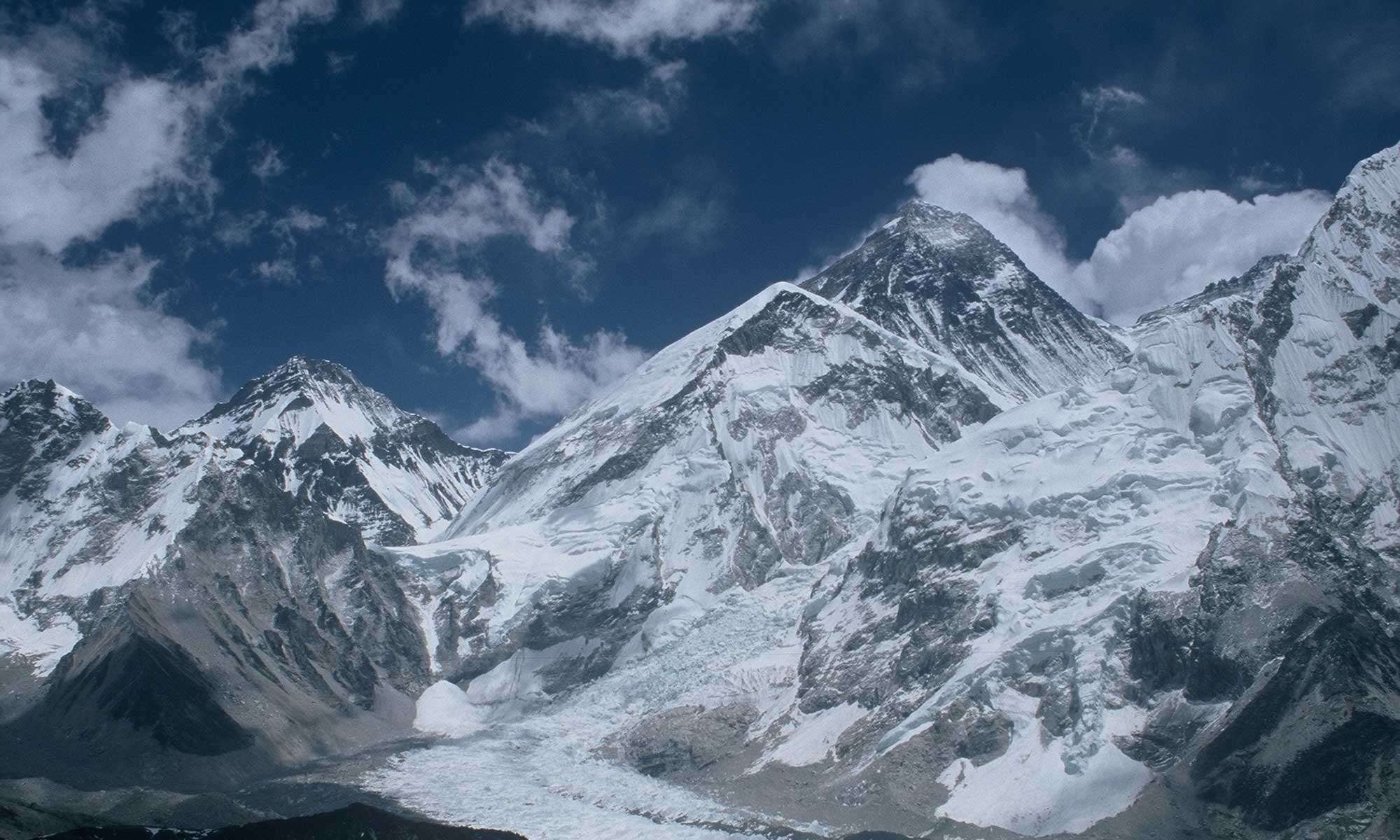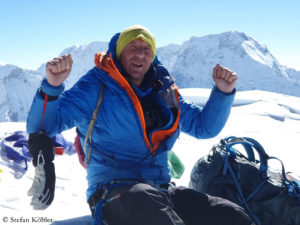Four peaks above 6,000 meters, frostbite on three fingers – that’s the balance of Stefan Köhler‘s Nepal trip this fall. “Despite the somewhat unfortunate ending, I had a great time in Nepal,” the 61-year-old tells me after his return.
At the end of June, Köhler had resigned from his post as first mayor of the city of Friedrichshafen on Lake Constance and taken early retirement. The enthusiastic mountaineer used his newfound freedom in the summer to lead groups into the mountains for the German operator Oberstdorf Alpinschule. His Himalayan trip was then on the agenda for this fall: Nepal again at last, Khumbu again at last.
In October 1990, Köhler had made a spectacular first ascent there: With his team partner Bernd Eberle, he had reached the 7,321-meter-high summit of Chamlang – via a new route through the Northwest and the West Face. It was the fourth ascent of the mountain, which is close to the eight-thousander Makalu. After that, work and family life had taken their time toll. In the past five years, however, Köhler had been increasingly drawn to the high mountains again. In 2016, for example, he had scaled the 7,077-meter-high Kun in the Indian Himalayas and in 2017 the 7,546-meter-high Mustagh Ata in western China.
“Clean alpine style”
In mid-October, Stefan and a small team – a Climbing Sherpa and a porter – set out for the Everest region, which was still relatively deserted as a result of the corona pandemic. “It was scary how underutilized the lodges were. I encountered a maximum of two to three people each there,” Köhler reports. “The owners or tenants have had ten percent of the guests this season, if that, as in pre-COVID times.”
The trio’s first destination was the Gokyo Valley. Because a bad weather front had been announced, Stefan decided against climbing the 5,357-meter-high Gokyo Ri, which had actually been planned in order to acclimatize. Instead, he and his companions moved straight on to the foot of the six-thousander Nirekha Peak. On 18 October, just one week after Köhler’s arrival in Kathmandu, the German climber and Rinji Bhote reached the fore-summit at 6,048 meters after a six-and-a-half-hour ascent. Three hours later – just in time before snowfall set in – the two climbers were back at base camp. “Exhausted, but proud to have practiced Himalayan mountaineering in clean alpine style,” Stefan wrote afterwards on Facebook.
Blinded by euphoria
And it went on one after the other: In intervals of a few days Stefan and Rinji stood first on the 6,119-meter-high Lobuche East, then on the 6,189-meter-high Imja Tse, also known as Island Peak. The only thing missing was Ama Dablam. On 2 November, the now well-rehearsed duo also reached the 6,812-meter-high summit of this shapely mountain. “When a dream becomes reality,” Köhler was pleased.
After the descent to Camp 2 at around 6,100 meters, however, he registered that something was wrong with his fingers. They hurt and turned red. “Maybe the summit euphoria blinded me,” Stefan speculates in retrospect. “Due to the persistent extreme cold, my body was possibly debilitated and a little hypothermic. Maybe also the very tight program with four six-thousanders within two and a half weeks was too much for my aging body.”
Good medical care
From the high camp, Köhler alerted Tshering Pande Bhote, the head of the agency Top Himalaya Guides. Tshering has an international mountain guide certificate and was also trained as a helicopter rescuer in Switzerland. He organized for his German client to be flown to base camp on a long line. From there, Stefan was flown by helicopter to Lukla, then with the first plane back to Kathmandu – where he was taken to a clinic that specializes in frostbite.
“The rescue chain worked in an exemplary manner, and the medical care was really good,” Köhler reports. He received infusions for six days, then he returned to Germany ahead of schedule. “My partner Susanne pulled the strings for me from home in this situation and also supported me mentally.”
The thumb is now without bandage again, but it could be that a piece of the index finger must be amputated, says Stefan. The attending physician Christoph Kruis from the Red Cross Clinic in Lindenberg in the Allgäu region – a specialist in frostbite – does not want to give a prognosis yet: “He says I have to be patient.”
Hopefully further into the high mountains
Actually, Köhler wanted to lead a tour on Kilimanjaro, the highest mountain in Africa, next spring, and later possibly also one on the seven-thousander Pik Lenin in Tajikistan. Those plans are on hold for now. “I hope to continue climbing in high altitude,” Stefan says. “But I won’t climb an eight-thousanders, which was still in the back of my mind before.”
Köhler says he is not resentful of fate: “It was actually the first time something like this had happened to me. Considering I’ve been extreme mountaineering for three decades and also lost some acquaintances and friends in the mountains, I got off easy.”





